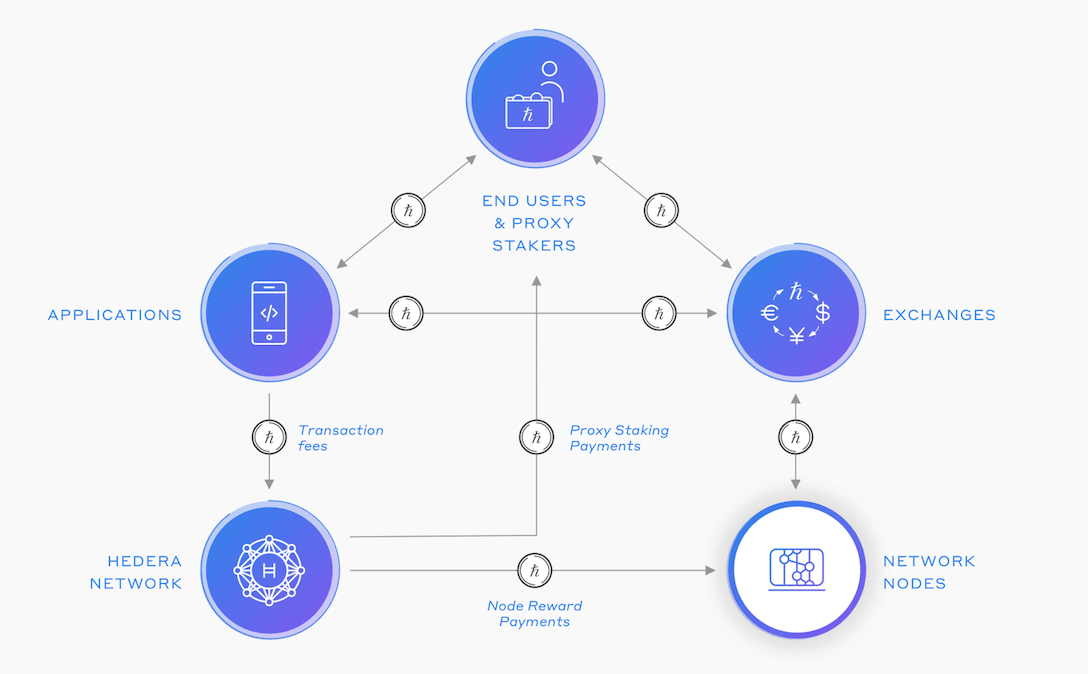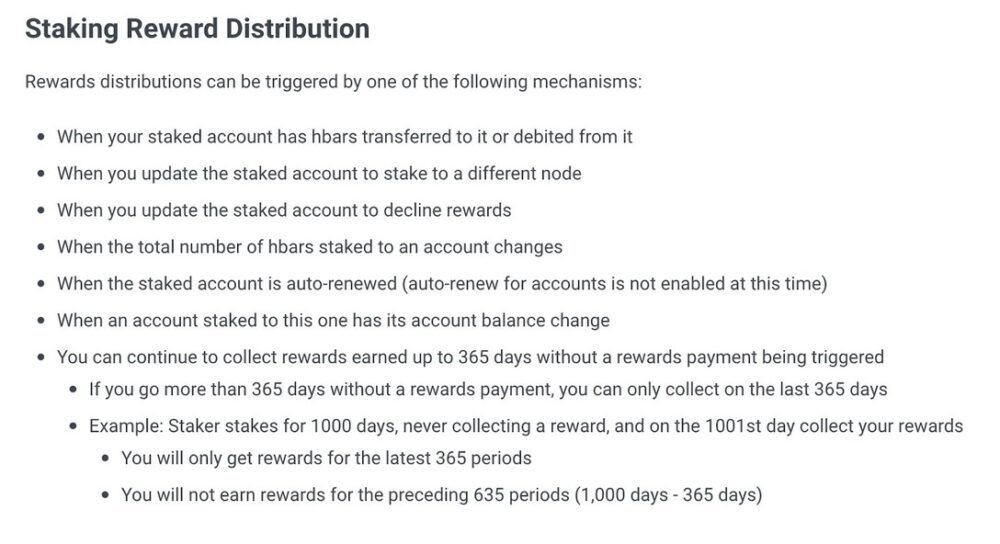Native HBAR Staking for users has been live since Oct 21.
HBAR is the native, eco-friendly cryptocurrency of the Hedera network. HBARs are used to pay transaction fees and safeguard the network from attack through proof-of-stake. Any account can elect to stake to a node or another account and receive rewards. This article will take you through how to participate in staking on the Hedera network.
Content:
Why is staking important?
Proof-of-stake (PoS) offers many advantages compared to proof-of-work (PoW), such as faster transaction speeds, higher energy-efficiency, and higher scalability. As a result, many decentralized networks now utilize a proof-of-stake consensus mechanism.
On top of that, proof-of-stake provides opportunities for users to earn more crypto assets. Under PoS, network participants who want to validate new transactions and add new blocks on the blockchain must “stake” the native cryptocurrency.
As a proof-of-stake network, Hedera requires HBAR to be staked to the network as a core function of the Hashgraph consensus algorithm. Furthermore, native staking further decentralizes and secures the network and represents a momentous milestone in the journey toward full decentralization.
Native HBAR Staking for users has been on since Oct 21, at 12:00 AM UTC. The first rewards were paid out to users occurring 24 hours later (12:00 AM UTC Oct 22) for all eligible accounts.
By staking HBAR, users can earn 6.5% APY. Read on to learn how to participate in it.

Key features of Hedera staking
No bonding or slashing
Native HBAR Staking features no bonding, which means no lock-up periods, and users can stake and unstake at any time. Nor does it have slashing. Slashing is the punishment for stakers/nodes for misbehaving, such as rearranging/reordering transactions before submitting.
The lack of slashing is because the Hashgraph algorithm ensures fair-ordering, a network feature that means transaction order is impossible to change by any actor by design.
Users can interact with the network and spend HBAR while staking, which won’t affect reward eligibility.
- Example: I am actively staking 100 HBAR to the LG Node at 12:00 AM UTC. I can interact with dapps, spend my HBAR, deposit more HBAR, etc. No matter how much HBAR is in my wallet 24 hours later, I will still receive rewards for the 100 HBAR that was in my wallet at the beginning of the epoch.
However, if a user changes their staking delegation (changes node), stops staking, or begins declining rewards at any point within 24 hours, they will not be eligible to receive rewards at the next distribution point.
Account-to-Account Staking
Users can stake to another account to contribute to consensus instead of directly staking to a node. In this case, rewards will be paid to the wallet directly staking to a node.
- Example: Account A is staked to the LG Node. Account B stakes to Account A. The collective weight of HBAR in both accounts will be calculated in the rewards distribution, which will be paid out entirely to Account A.
This enables further flexibility within the ecosystem, allowing staking and interaction between participants.
- Example: Access + Ownership. A metaverse project requires you to stake some HBAR to account A to access the platform. They still provide you with the same rewards you would receive if you staked directly to a node, but now all in-game digital assets can be directly transferred to your account instead of in a central wallet.
How are HBAR rewards calculated and distributed?
To be eligible for rewards, users must be actively staking to one of the Governing Council nodes for the entire 24-hour period following 12:00 AM UTC on any given day, at the end of which rewards will be distributed.
Every day at 12:00 AM UTC, a snapshot of each wallet actively staking and the amount of HBAR they are contributing to the consensus is taken.
Assuming that a wallet has been actively staking for 24 hours following the snapshot, rewards will be distributed from the reward account (account ID is 0.0.800 on mainnet) to the respective wallet according to how much HBAR they were staking at a rate of 6.5% APY.
Wallets must perform a particular “action” to claim their rewards. You can refer to the mechanisms which trigger distribution below.


Notably, even if a wallet does not perform one of these actions with pending staking rewards, rewards will still accrue for a maximum of 365 days.
- Example: If I am staking 100 HBAR and do not interact with my wallet for ten days, then perform one of the actions detailed above, I will receive the collective rewards from all the previous ten days.
How to stake
There are three ways for users to participate in native staking, which are as follows.
- What wallets to use for native staking
- Exchanges with integrated staking:
- Users can also access staking through HashScan.io, the Hedera network explorer, with HashPack.
Support Hedera’s vibrant ecosystem
Currently, there are 29.5 billion HBAR tokens staked to the network. This is a solid testament to users’ confidence in the Hedera blockchain and its ecosystem.
Hedera’s rise as a decentralized network for hosting dapps speaks for itself. The network has developed into an all-encompassing platform with various dapps thriving in all sectors.


For example, HeliSwap, an open-source, decentralized exchange (DEX) platform that supports tokens within the Hedera ecosystem, has seen unique active wallets increase by 220% over the last 30 days. Things also look bright in the NFT sector, with Hbar Punks’ trading volume going up by 124% within 30 days.
If you are also bullish on the future of Hedera, then click the button below to participate in the HBAR staking now.
Useful links:
Disclaimer — This is a sponsored article. DappRadar does not endorse any content or product on this page. DappRadar aims to provide accurate information, but readers should always do their own research before taking action. Articles by DappRadar can not be considered as investment advice.
- Bitcoin
- blockchain
- blockchain compliance
- blockchain conference
- coinbase
- coingenius
- Consensus
- crypto conference
- crypto mining
- cryptocurrency
- DappRadar
- decentralized
- DeFi
- Digital Assets
- ethereum
- machine learning
- non fungible token
- plato
- plato ai
- Plato Data Intelligence
- PlatoData
- platogaming
- Polygon
- proof of stake
- W3
- zephyrnet










